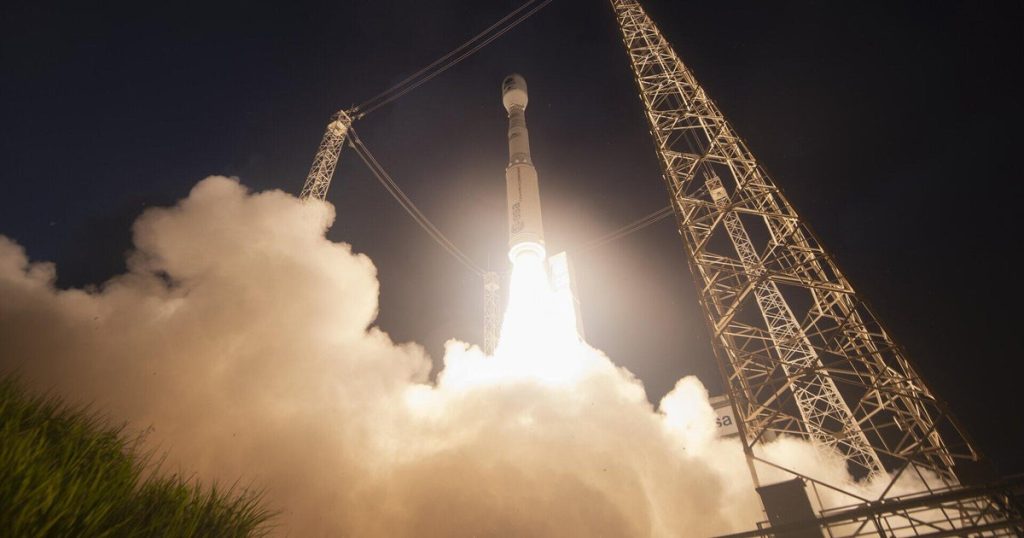The European Space Agency (ESA) has successfully launched a groundbreaking satellite named Biomass, aimed at revolutionizing our understanding of Earth’s forests and their role in the carbon cycle. This satellite is equipped with advanced technology designed to measure the biomass of trees, which plays a crucial part in carbon storage and regulation of the planet’s climate. Launched from Europe’s Spaceport in Kourou, New Guinea, Biomass is expected to deliver unprecedented insights into the intricate relationship between forests and climate change.
| Article Subheadings |
|---|
| 1) Launch Details of Biomass Satellite |
| 2) Objectives of the Biomass Mission |
| 3) Significance of Forests in the Carbon Cycle |
| 4) Technology Behind Biomass |
| 5) Future Applications and Benefits |
Launch Details of Biomass Satellite
The Biomass satellite was launched successfully from Kourou, New Guinea, utilizing a Vega-C rocket. This launch marks a significant milestone for the European Space Agency, as it aims to enhance our understanding of ecosystem dynamics and carbon sequestration. Less than an hour post-launch, the satellite separated from the rocket, and about 75 minutes later, communication was established successfully, confirming that Biomass was operational and functioning as intended. The next steps involve the satellite undergoing its “launch and early orbit” phase, where controllers will execute a series of procedures to ensure all systems are optimized for its mission.
Objectives of the Biomass Mission
Biomass’s primary objective is to assess the quantity of carbon stored in the global forest ecosystems. With forests absorbing approximately 8 billion tons of carbon dioxide each year, understanding their capacity and health is vital for climate monitoring. Deforestation and environmental degradation in tropical regions lead to staggering carbon release, contributing to climate change concerns. Thus, the data gathered by Biomass will help fill critical gaps in data concerning carbon storage and emissions, fostering a better understanding of the intricate carbon cycle and its influence on global warming.
Significance of Forests in the Carbon Cycle
Forests are considered one of the planet’s most effective natural tools for carbon sequestration. By absorbing carbon dioxide, they help to mitigate climate change and maintain global temperatures. However, various factors such as human activity, especially deforestation, release these stored gases back into the atmosphere. As the world grapples with climate change, accurate and timely data on forest carbon storage will become increasingly important. The ESA emphasizes that understanding the carbon reservoirs provided by forests will yield key insights into how climate policies can be effectively crafted.
Technology Behind Biomass
Equipped with pioneering P-band synthetic aperture radar, Biomass is the first satellite to utilize this specific technology in space. This advanced radar can penetrate dense forest canopies, allowing it to measure woody biomass accurately, including the essential trunks, branches, and stems of trees. Since most forest carbon resides within these structures, the data gathered will act as a proxy for understanding overall carbon storage capabilities in forest ecosystems. This innovative technique will facilitate the acquisition of high-resolution data critical for ecological and environmental studies.
Future Applications and Benefits
The tools and technology aboard Biomass are designed not only for forest analysis but can also serve various applications across different environments. The ESA indicated that the satellite can assist in mapping subsurface geology in arid deserts, assessing ice sheet structures, and studying forest floor topography. This multifaceted approach enhances its utility, offering valuable data that can support a wide array of scientific and environmental research, ultimately contributing to global efforts in combating climate change.
| No. | Key Points |
|---|---|
| 1 | The Biomass satellite launched from Kourou, New Guinea, aims to study global forests. |
| 2 | Its main objective is to measure carbon storage capacities of forests worldwide. |
| 3 | The satellite is equipped with advanced radar technology to assess woody biomass. |
| 4 | Understanding carbon storage in forests can aid in formulating climate policies. |
| 5 | Biomass’s technology has broader applications in various ecological and environmental studies. |
Summary
The successful launch of the Biomass satellite signifies a pivotal advancement in our understanding of forest ecosystems and their role in the global carbon cycle. With its sophisticated technology and mission objectives, Biomass is set to provide vital data that will enhance our knowledge of carbon sequestration mechanisms. The implications of its findings will extend beyond forest studies, contributing to more effective responses to climate change and promoting sustainable environmental practices.
Frequently Asked Questions
Question: What is the Biomass satellite’s primary mission?
The Biomass satellite is primarily designed to measure the quantity of carbon stored in global forest ecosystems, thereby enhancing our understanding of the carbon cycle.
Question: How does the Biomass satellite measure woody biomass?
It utilizes advanced P-band synthetic aperture radar technology to penetrate forest canopies and accurately measure the trunks, branches, and stems of trees.
Question: What potential applications does Biomass have beyond studying forests?
The satellite’s technology can also be applied in diverse environments, including mapping subsurface geology in deserts and assessing ice sheet structures.


